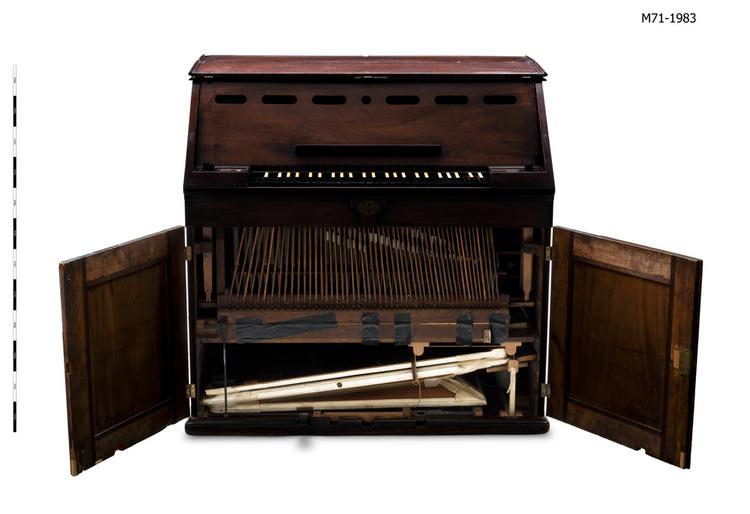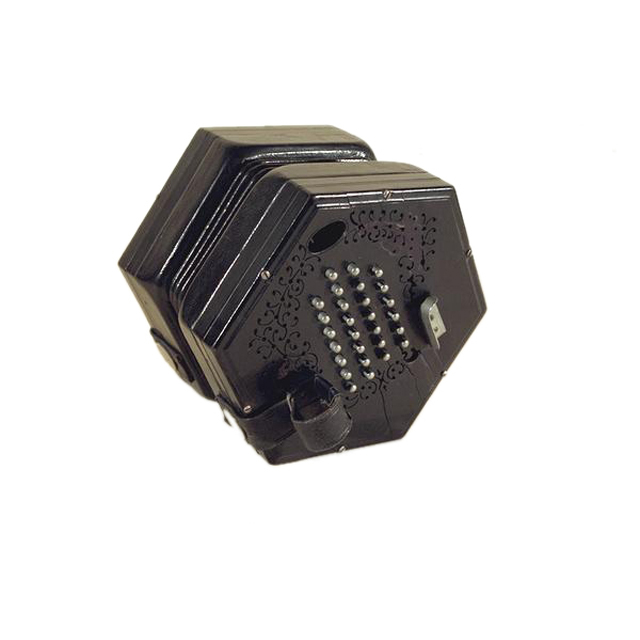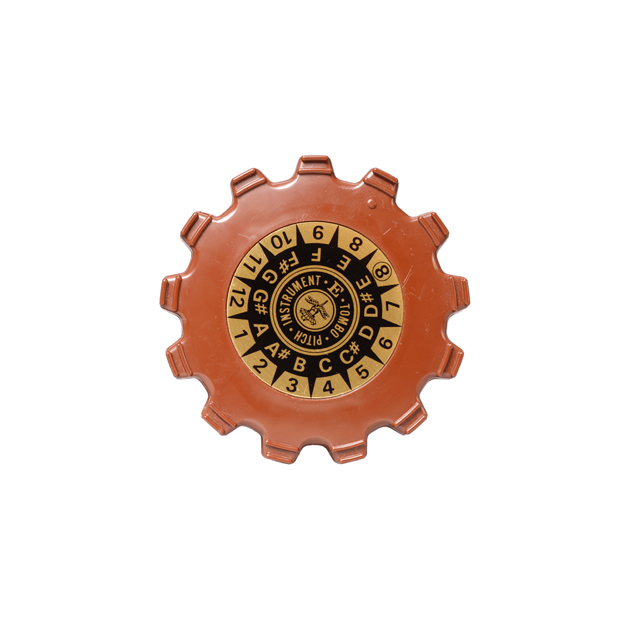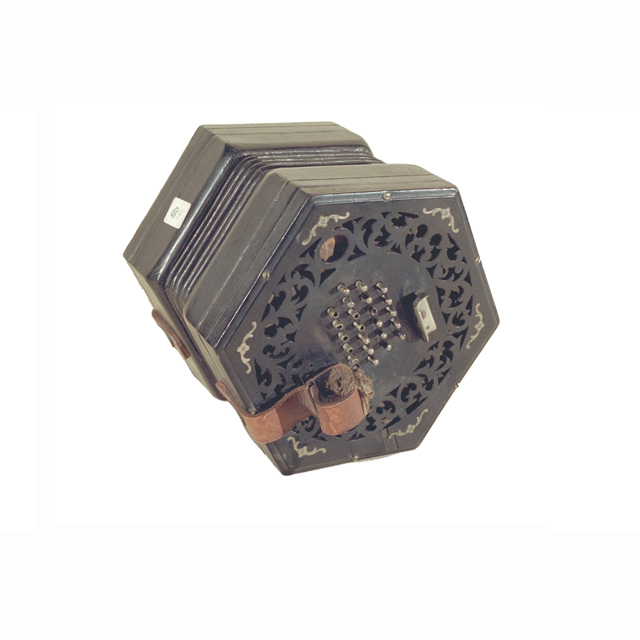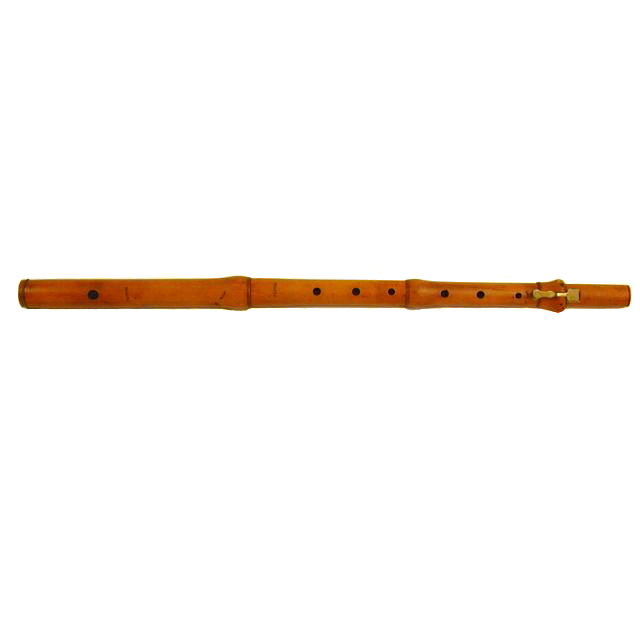
One-keyed flute. Index card reads: Flute in D. FLORIO (London). Peterborough Museum. One brass key, flat, square, mounted in turned ring. Boxwood, without mounts. Second half of the 18th century. A scarcely used instrument, in mint condition. Overall: 571 mm; Bore at upper joint: 17 mm, at middle joint: 13 mm, at foot joint: 10.5 mm, at foot: 13 mm. The head joint and upper joint are stamped: FLORIO. The inscription on head joint is at a slight angle.
Pietro Grassi Florio was an Italian flautist who was active in London in the late 18th century. He was working at a time when keys were first starting to be introduced to flutes, and having previously been employed in the Dresden court, Florio was aware of recent German advancements in key technology. Rivalry between flautists at the time was fierce, and Florio was keen to keep his innovative flute key designs from his colleges. One story tells of how he was so keen to prevent his keys from being seen that, when performing in the opera pit, he endeavored to conceal the foot joint of his flute from the other players in his section.




